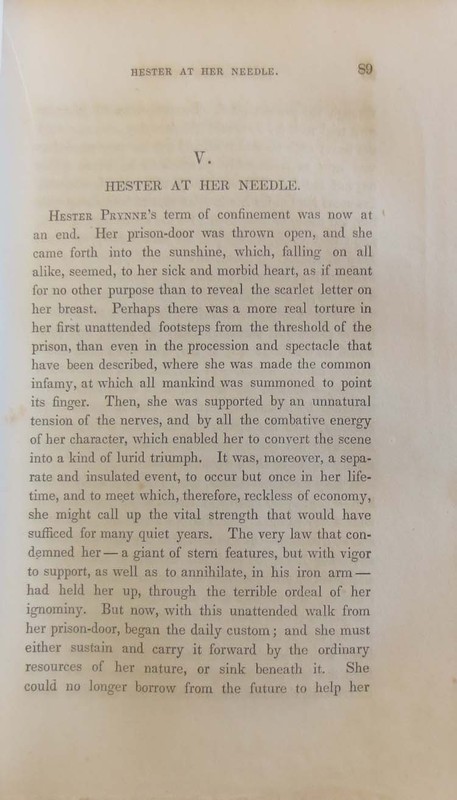The Scarlet Letter. Ticknor, Reed and Fields, 1850
Nathaniel Hawthorne (1804-1864).
The Scarlet Letter.
Boston: Ticknor, Reed and Fields, 1850
Call Number: (SPL) PS 1868 .A1 1850a
From the library of B. George Ulizo.
Special Collections, Golda Meir Library
Third edition, first printing. In winter of 1849, publisher James T. Fields visited Hawthorne's home in Salem to solicit material for publication. Reluctant due to the poor critical reception of his early works, Hawthorne commented, "who would publish anything for me, the most unpopular writer in America?" Fields nonetheless offered to print 2,000 copies of any Hawthorne work, and as he left, Hawthorne gave him a preliminary manuscript of The Scarlet Letter in short story form.
Hawthorne added numerous characters from local history to flesh out the story, but it remained unconventionally short, even with the lengthy "Custom House" introductory essay. Hawthorne doubted the work's appeal to the novel-reading public and wrote, "The Scarlet Letter is powerfully written; but my writings do not, nor ever will, appeal to the broadest class of sympathies, and therefore will not obtain a very wide popularity."
He could not have been more wrong: the March 1850 first edition was exhausted within ten days. Stereotyped second and third editions came out in quick succession in the same year, and the work became fashionable reading material throughout the United States. Reviewers complained that the work was "peculiar" or "gloomy," but appreciated Hawthorne's uniquely American style and subject matter. Despite its patently unpuritanical premise, The Scarlet Letter nevertheless quickly attained a secure place in the literary chorus of the New England school.


